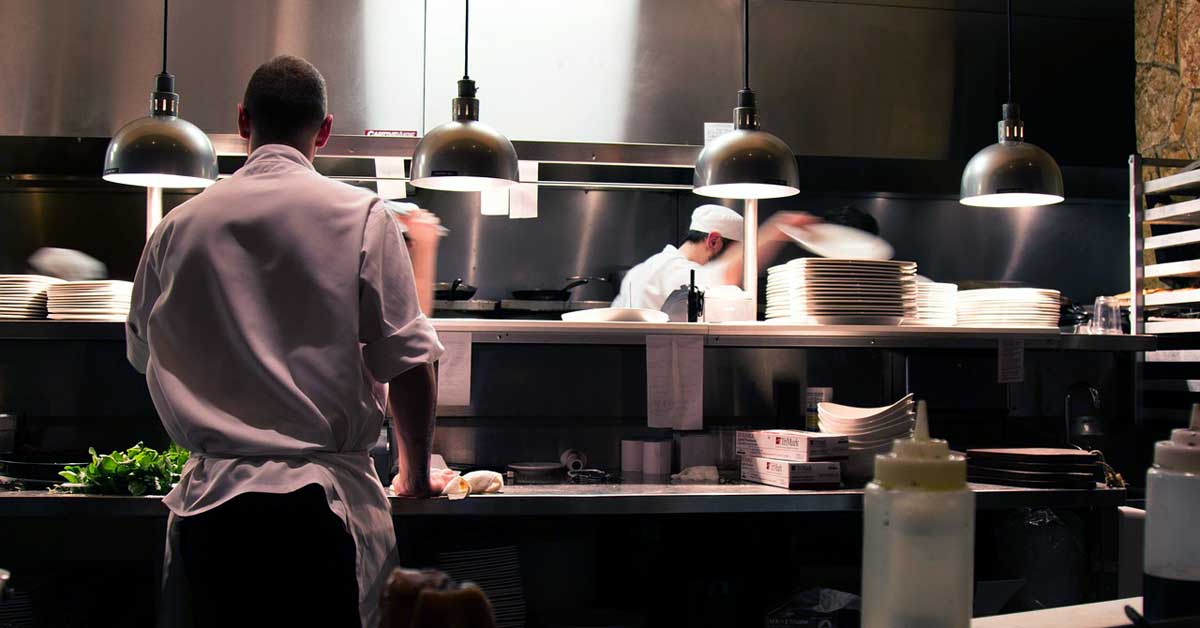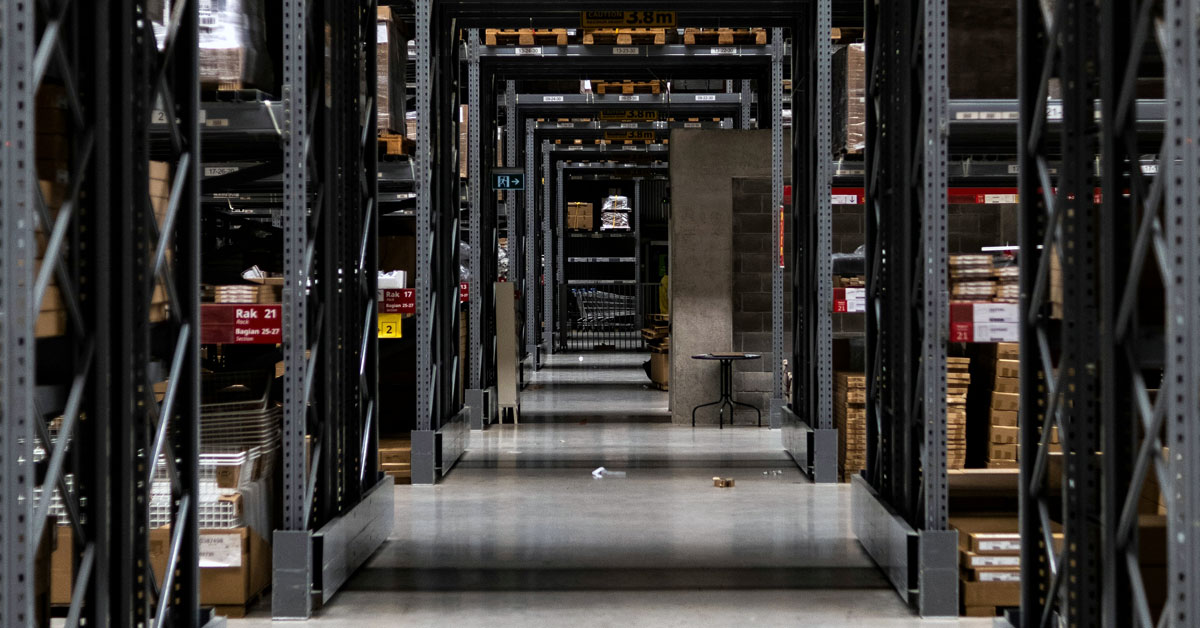How does the implementation of non-crossing flow organization contribute to both the efficiency and hygiene of a restaurant kitchen, and what role does it play in minimizing the risk of contamination in food preparation and service?
Ensuring a safe and hygienic environment in the kitchen is essential, especially in commercial and collective food establishments. A key technique that ensures effective organization and reduces the risk of contamination is the Non-Crossing Flow Organization. This approach establishes a logical and efficient workflow, avoiding unnecessary back-and-forth movements and significantly enhancing time management.
By strategically arranging the kitchen space and implementing stringent measures, the Non-Crossing Flow Organization minimizes the chances of clean and dirty circuits intersecting, safeguarding against potential contamination at every stage of food preparation and service.
Maintaining a Logical and Efficient Workflow
The core principle of the non-crossing flow organization is to create a logical and efficient workflow that minimizes unnecessary back-and-forth movements and optimizes time management. This concept must be taken into consideration right from the initial design and layout of the kitchen space.
Practical example: For instance, in a restaurant kitchen designed with Non-Crossing Flow Organization, raw food preparation and cooking stations would be strategically positioned to minimize the distance between them, reducing the need for chefs to crisscross the kitchen. Additionally, the placement of clean and dirty dish areas would follow a logical sequence, ensuring that used utensils move in a linear, non-overlapping fashion, thereby minimizing the risk of contamination and streamlining the overall workflow.
Engaging a reputable professional with experience in contamination control design is crucial for a successful implementation. The support and guidance of the local Department of Population Protection (DDPP) can also prove invaluable in developing and executing the project.
Preventing Contamination at Every Stage
While adhering to the non-crossing flow organization is essential for spatial and temporal movement, it alone is not sufficient to achieve a contamination-free environment. Contamination risks persist due to various factors such as human contact (unclean hands, coughing, hair), contact with soiled equipment (whisks, blenders), or environmental elements (insects, dust, etc.). Acknowledging that absolute zero risk is unattainable, it is crucial to implement stringent measures at each stage of the workflow.
Practical Example: In a restaurant kitchen meticulously designed with non-crossing flow organization, the careful placement of cutting boards and cooking stations minimizes unnecessary movements. However, recognizing the limits of spatial organization, chefs also diligently follow protocols like frequent handwashing and glove usage to mitigate the risk of contamination from unclean hands. Moreover, the implementation of a rigorous cleaning schedule for equipment, such as regularly sanitizing whisks and blenders, becomes an indispensable practice to counteract potential sources of cross-contamination.
Zoning for Optimal Separation
The successful implementation of the non-crossing flow organization requires the kitchen to be carefully segmented. Clearly defining and demarcating clean and dirty sectors is imperative. Proper storage of ingredients is vital; categorizing them into separate refrigeration units for meat, fish, dairy (Butter, eggs, cheese), fruits, and vegetables prevents cross-contamination. Additionally, once items leave storage, they should not return to maintain the forward flow. This necessitates the presence of refrigerators or refrigerated cabinets within the preparation areas.
Practical exemple: In a restaurant kitchen embracing non-crossing flow organization, zoning plays a pivotal role in preventing cross-contamination. For instance, the kitchen is strategically divided into distinct sectors, clearly designating areas for food preparation and those for waste disposal or cleaning. Ingredients are stored with meticulous attention to categorization, ensuring that meat, fish, dairy (Butter, eggs, cheese), fruits, and vegetables each have dedicated refrigeration units, or spaces.
The Crucial Role of the Washing Area
The washing area plays a pivotal role in the non-crossing flow organization. It should allow distinct paths for soiled and clean dishes. Separating dishwashing from batter preparation, and using different containers with protective coverings for raw and cooked products, helps to prevent cross-contamination.
Maintaining the Flow During Service
Even during the service phase, the non-crossing flow organization can be upheld by designing separate routes for servers bringing out dishes and those clearing tables. This thoughtful arrangement minimizes the risk of cross-contamination.
Practical example: In a restaurant embracing non-crossing flow organization, the kitchen seamlessly extends its principles into the service phase. Servers bringing out dishes and those clearing tables follow distinct and carefully designed routes. For instance, servers retrieving prepared dishes may follow a designated path that avoids intersecting with the route taken by those clearing tables.
Managing Waste
The waste disposal area is inherently the most “dirty” zone and requires specific attention. Adequate ventilation, ease of cleaning, and if possible, temperature control or refrigeration should be implemented in this space. Strategically positioning garbage bins (with non-manual opening lids) to minimize movement across preparation, cooking, and distribution zones ensures waste is safely handled.
Time-Based Forward Movement
In cases where limited space restricts clear zoning, a time-based forward movement approach can be adopted. However, this approach demands more stringent measures as workspaces must be cleaned and disinfected after each contaminating operation, like unpacking and peeling. It is important to remember that this technique addresses workflow organization rather than the physical layout of the kitchen.
Practical example: In compact kitchen spaces where clear zoning is challenging, adopting a time-based forward movement approach becomes crucial. For instance, if a chef is engaged in tasks such as unpacking and peeling ingredients, a strict schedule is implemented to ensure that workspaces are cleaned and disinfected immediately after each potentially contaminating operation.
Conclusion
Embracing the Non-Crossing Flow Organization stands as a fundamental pillar in safeguarding kitchen hygiene and food safety. By adopting this technique, kitchens can establish an efficient and streamlined workflow, reducing the risk of cross-contamination at every stage of food handling.
By establishing a logical workflow and preventing clean and dirty circuits from intersecting, this approach significantly reduces the risk of contamination at every stage of food preparation and service. Through strategic spatial organization, clear zoning, and stringent hygiene practices, culinary professionals can uphold the highest standards of cleanliness and safety in their kitchens. Prioritizing this technique enables food establishments to provide customers with not only delicious but also safe and contaminant-free meals.
By prioritizing Non-Crossing Flow Organization technique, food establishments can continue to provide customers with not only delicious but also safe and contaminant-free meals.
For more information on cross contamination in restaurant’s kitchens, we recommend the following resources:
_________________________________________________
Canadian Institute of Food Safety –
Cross-Contamination in Commercial Kitchens: https://blog.foodsafety.ca/cross-contamination-commercial-kitchens
QSRMagazine – How to Protect Commercial Kitchens from Cross-Contamination: https://www.qsrmagazine.com/outside-insights/how-protect-commercial-kitchens-cross-contamination
Toast – How to Train Kitchen Staff to Prevent Cross-Contamination: https://pos.toasttab.com/blog/on-the-line/cross-contamination







